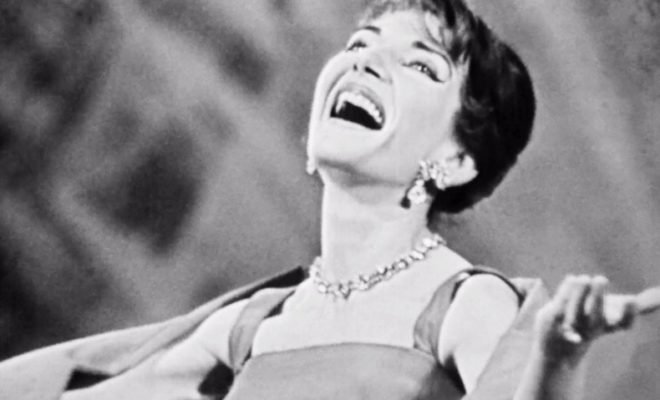
Movie Reviews
A Night at The Opera
By: Jennifer Vintzileos
In a short directed by Sergei Loznitsa, A Night at The Opera provides a glimpse into the opulence and elegance of opera at the Palais Garnier in Paris, France during the 1950’s and 1960’s. Utilizing footage from the famous opera house, the dialogue and emotion of the vintage film captured just how grand it was to attend such an event. While many of us now can attend opera in just about any big city the era of this decadence has come and gone, only to be found again within the confines of film.
On a night where Maria Callas is set to take the stage, the Palais Garnier resembles a red-carpet event. Fans and residents gather outside to get a peek at everyone attending the theater that night. Men are dressed in black tuxedos, some with medals adorning their lapel. Women are in ballgowns and white gloves, some with furs draped over their shoulders. And on this particular night royalty has come to the Palais Garnier as Queen Elizabeth II, along with Charles de Gaulle and Grace Kelly, is in attendance.
The music is on point as the operagoers walk in to hear such pieces as “Die Zauberflote” and “Aida: Triumph March.” “La Marsellaise” plays in the hall when esteemed leaders such as Charles de Gaulle go to take their seats. Finally, Maria Callas takes the stage and cheers resound through the crowd before she goes to sing “Una Voce Poco Fa” by Rossini from Il Barbiere Di Saviglia (“The Barber of Seville”). Her vocals resonate through the audience, and she is met with thunderous applause. Outside fireworks are going off amidst the cheers of the crowd.
Sergei Loznitsa has found a way to make opera relevant today. With the way that many of us idolize celebrities, this is the way the opera was viewed during that era and even before that. As time goes on the place and situation may change, but people seem to react in similar excitement. Although, I’m not so sure that today would quite measure up with the elegance portrayed in the film. A Night at The Opera is an homage to the past, a way of honoring what has come before. The imagery speaks rather than having modern dialogue to describe it, the beauty and grandeur well represented.
While the bulk of A Night at The Opera is in black and white, there is one brief moment that we view the opera house in vivid color. And once it is gone, we are irrevocably changed, hoping to catch another glimpse of that brightness while time marches on. There is truly nothing quite like a night at the opera.




You must be logged in to post a comment Login